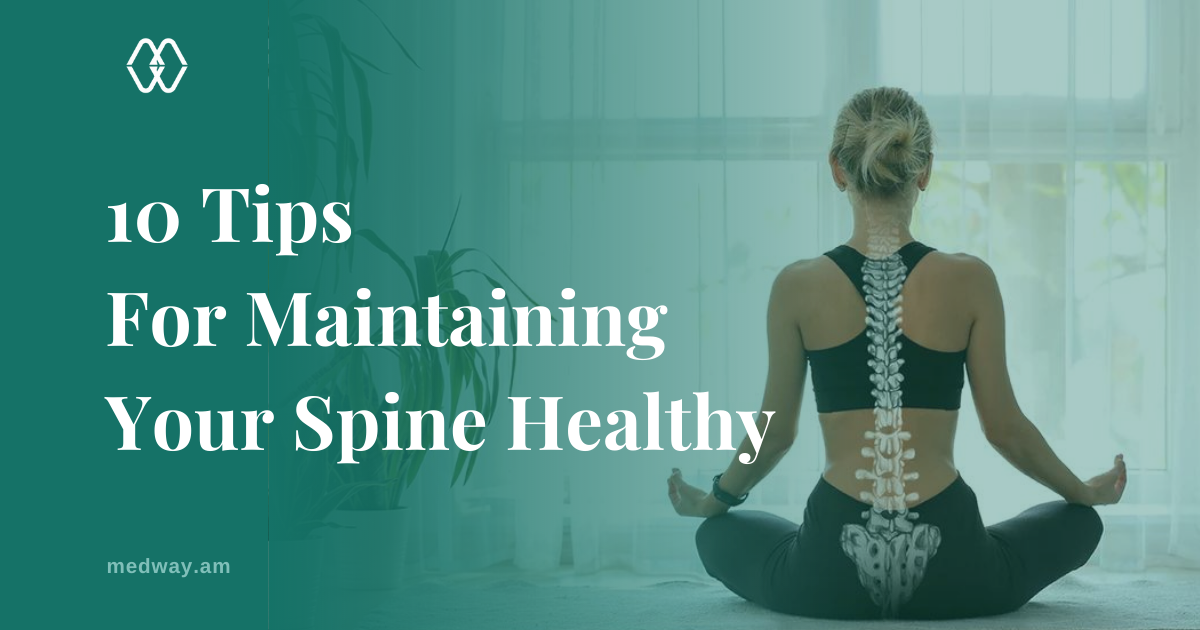
The human spine is a stack of 33 vertebrae connected and cushioned by cartilage and connective tissue. These vertebrae are linked by facet joints that, like other joints in the body, can experience inflammation, degradation, and pain. Pain in the back or neck can occur when vertebrae, facet joints, or other spinal components feel the long-term impact of injury, poor posture, inactivity, too much sitting, muscle strain or certain diseases.
For patients who have sustained a neck or back injury, or who regularly feel some degree of pain and discomfort after certain activities, the best approach to improving their back health is a regular course of physical therapy, which is considered a targeted therapy.
But below are some tips that could help keeping the back in good condition, and could even slow down the progression of some age-related spinal issues.
- Stay in motion
Maintaining a steady regimen of targeted stretching and strengthening helps to promote good joint function and range of motion, which in turn promotes spine health and reduces the overall risk for injury.
Remaining in one position for an extended time is hard on the spine. Keep the spine activated by frequently moving around, walking, and occasionally exercising or stretching to keep the back flexible and limber.
- Maintain a healthy weight
Carrying around excess weight can strain the lower back due to added stress on the muscles, ligaments and tendons in the spinal area. Also, excess weight can often result in additional diseases or physical conditions that may further impair the spine or intensify existing problems.
- Don’t Smoke
Nicotine is a vasoconstrictor; it tightens blood vessels, thus reducing blood flow and limiting oxygen and nutrition to the spine. Vasoconstriction can accelerate inflammation and degradation within the spine and throughout the body.
- Reduce or avoid inflammatory foods
Try to reduce a diet which is rich in inflammation-causing dairy, red meats, refined sugar, and other processed foods. Choose instead healthy anti-inflammatory foods, such as plant-based foods that are also naturally low in calories and help to reduce excessive weight.
- Watch out when heavy lifting
The act of bending to lift a heavy object places a large strain on the spine. So, if you don’t have the proper form when picking up heavy objects, you may twist the wrong way and damage your spine. To lift correctly keep the back straight, bend the knees, and recruit the power of the legs to complete the lift.
- Stand whenever possible
Constant sitting makes it nearly impossible to maintain neutral spine alignment and that can contribute to spinal stress. Standing is frequently the better option. Many people appreciate their stand-up desks or sit on a large workout ball rather than an office chair, to engage the core and encourage the back to remain erect.
- Try yoga
Yoga is a highly beneficial activity that can both strengthen and stretch muscles. Beginners should start slow to avoid getting injured in the back or neck region. The yoga instructor can recommend the necessary modifications that will protect the spine while helping to get the most from each pose.
- Get into the water
Water therapy can play a very helpful role in alleviating back issues, especially for those who experience severe discomfort with a land-based approach.
Water is a great way to get exercise without putting stress on the back. Studies have shown that exercises in the water that strengthen the leg, abdominal, and gluteal muscles or that stretch the hip, back, and leg muscles, help with back pain. Water has a buoyancy effect, which puts less stress on the back and joints. The friction of the water allows for gentle resistance through movements, which can help in strengthening the muscles around the joints and back.
9. Stay hydrated
Water contributes to overall structural health. Staying hydrated helps to maintain soft tissue elasticity and fluidity in the joints, which is important for spinal discs to keep their height. When spinal discs shrink due to dehydration, then the risk of suffering from a painful disc condition such as herniation or bulging discs will increase.
- Seek a doctor’s advice
It makes sense to seek medical attention when neck or back pain is persistent or if it flares regularly or never fully dissipates. Be assured, in most instances, back or neck pain will not require surgery. Your doctor may refer you to a Neurologist-Spinologist, a physiotherapist or an orthopedic surgeon for further examination, or to a doctor specializing in pain management.
In conclusion, if you’re experiencing persistent neck and back pain, keep in mind that it typically won’t go away on its own. Follow the above-mentioned tips but remember that targeted therapy remains the most effective way to prevent and relieve most neck and back pain and to start you on the path to more pain-free living.